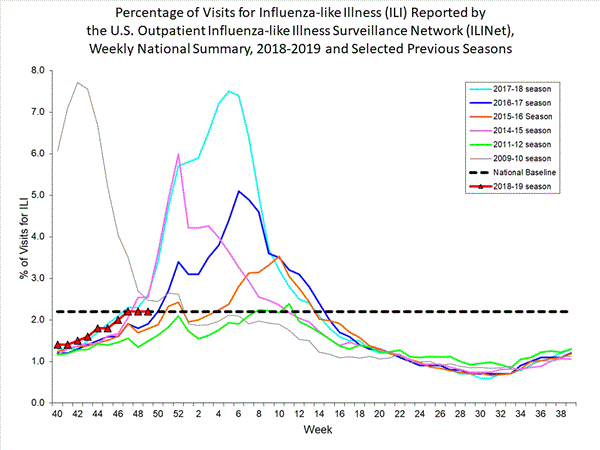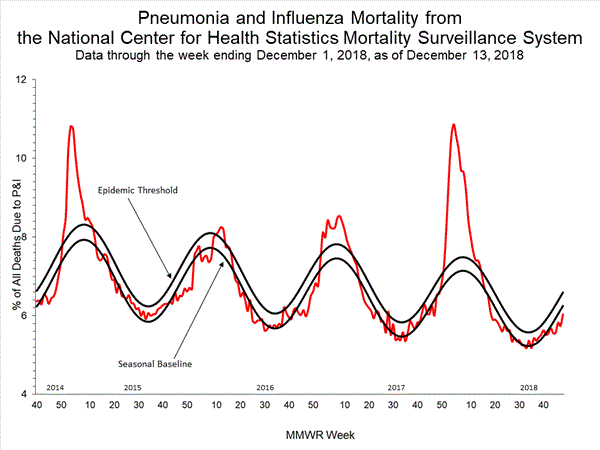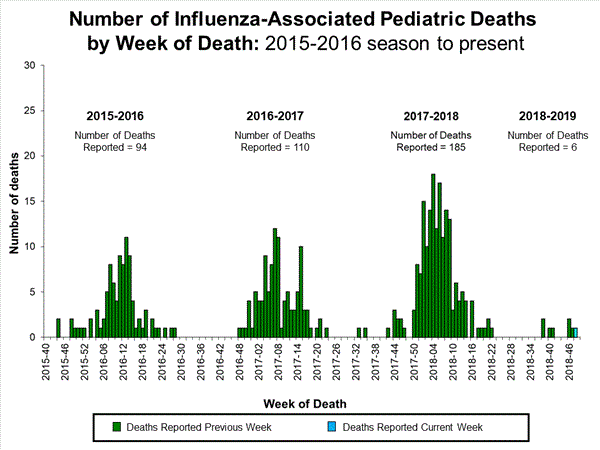Archive for December, 2018
The Democratic Republic of the Congo (DRC) ministry of health confirmed 18 new Ebola cases, including 9 deaths
Tuesday, December 18th, 2018Monday, December 17, 2018
- Since the beginning of the epidemic, the cumulative number of cases is 539, of which 491 are confirmed and 48 are probable. In total, there were 315 deaths (267 confirmed and 48 probable) and 186 people cured.
- 75 suspected cases under investigation.
- 8 new confirmed cases, 3 in Katwa, 2 in Butembo, 2 in Komanda and 1 in Oicha.
- 2 new deaths from confirmed cases in Katwa.
- 2 new people healed out of Butembo CTE.

12/17/1961: A fire at a circus in Brazil kills more than 300 people and severely burns hundreds more.
Monday, December 17th, 201812/16/1920: The 8.5M Gansu (Haiyuan) earthquake impacted an area of some 25,000 square miles, including 10 major population centers resulting in the deaths of some 200 000 people.
Sunday, December 16th, 201812/16/1960: 2 airplanes collide over New York City, killing 134 people on the planes and on the ground.
Sunday, December 16th, 2018https://www.youtube.com/watch?v=b0P-TaGpPsQ
Why is there a decline in Salmonella infections in NYC restaurants?
Sunday, December 16th, 2018Restaurant Inspection Letter Grades and Salmonella Infections, New York, New York, USA PDF Version[PDF – 506 KB – 5 pages]
10 brilliant technological innovations to save moms and babies
Sunday, December 16th, 2018For many mothers and babies around the world, the first 48 hours after birth are the most dangerous of their lives. For eight years, Saving Lives at Birth—spearheaded by USAID—has challenged problem solvers worldwide to create innovative solutions to make birth safer and save lives.
Ebola virus disease – Democratic Republic of the Congo Update
Saturday, December 15th, 2018The Ebola virus disease (EVD) outbreak in the Democratic Republic of the Congo is occurring in an unforgiving context. Non-engagement from communities and conflict continue to hamper response activities in some affected areas. Moreover, poor infection prevention and control (IPC) practices across numerous private and public health centers remain a major source of amplification of the outbreak and risk to health and other frontline workers.
Despite these challenges, substantial progress has been made on multiple fronts to address the situation, and daily successes are being observed in the implementation of proven public health measures alongside newer tools, such as vaccination and novel therapeutics. Together with the Ministry of Health (MoH) and our partners, WHO is further scaling up our response to the developing situation. WHO especially emphasizes the need to continuously improve quality, judiciously deploy new tools at our disposal, and sustain international commitment to response efforts well into 2019. Nonetheless, we remain confident the outbreak can be brought to a conclusion.
During the reporting period (5 through 11 December 2018), 37 new cases were reported from 10 health zones in North Kivu and Ituri provinces: Katwa and Butembo (18), Beni (seven), Mabalako (four), Oicha (three), as well as one case each in Komanda, Kyondo, Mandima, Musienene and Vuhovi. Four new infections of health workers have been reported in Musienene, Katwa and Butembo health zones. In total, 51 (49 confirmed and two probable) health workers have been infected to date, of whom 17 have died. Twenty-three additional survivors were discharged from Ebola treatment centres (ETCs) and reintegrated into their communities. A total of 177 patients have recovered to date.
As of 11 December, 505 EVD cases (457 confirmed and 48 probable), including 296 deaths, have been reported in 12 health zones in North Kivu Province and three health zones in Ituri Province (Figure 1). These zones represent a mix of densely populated urban areas and remote villages, each bringing a variety of factors driving transmission and posing different challenges. Trends in case incidence (Figure 2) reflect the continuation of the outbreak across these geographically dispersed areas, with an average of 33 new cases reported each week since mid-October. Although there has been a general decrease in the intensity of transmission in Beni in recent weeks, the outbreak is intensifying in Butembo and Katwa, and new clusters are emerging elsewhere. At present, the situation remains concerning.
The very high risk of further geographical spread of the outbreak was highlighted this week by the movement of several contacts of confirmed cases from Beni to Kisangani and Goma. All of these contacts were rapidly traced, and have since returned to Beni where they will complete their 21 day follow-up. Several alerts of potential cases were also received from Goma, and towns between Goma and Butembo. These individuals were promptly isolated, reported and tested negative for EVD. Preparedness and operational readiness activities in other areas of North Kivu and Ituri provinces, other provinces of the Democratic Republic of the Congo, and neighbouring counties, must continue to be upscaled to rapidly detect and respond to any potential cases.


Data in recent weeks are subject to delays in case confirmation and reporting, as well as ongoing data cleaning – trends during this period should be interpreted cautiously.
Public health response
The MoH continues to strengthen response measures, with support from WHO and partners. Priorities include coordination, surveillance, contact tracing, laboratory capacity, IPC, clinical management of patients, vaccination, risk communication and community engagement, psychosocial support, safe and dignified burials (SDB), cross-border surveillance, and preparedness activities in neighbouring provinces and countries. Infection prevention and control practices in health care facilities, especially antenatal clinics, need to be further strengthened.
For detailed information about the public health response actions by WHO and partners, please refer to the latest situation reports published by the WHO Regional Office for Africa:
WHO risk assessment
This outbreak of EVD is affecting north-eastern provinces of the country bordering Uganda, Rwanda and South Sudan. Potential risk factors for transmission of EVD at the national and regional levels include: travel between the affected areas, the rest of the country, and neighbouring countries; the internal displacement of populations. The country is concurrently experiencing other epidemics (e.g. cholera, vaccine-derived poliomyelitis, malaria), and a long-term humanitarian crisis. Additionally, the security situation in North Kivu and Ituri at times limits the implementation of response activities. WHO’s risk assessment for the outbreak is currently very high at the national and regional levels; the global risk level remains low. WHO continues to advice against any restriction of travel to, and trade with, the Democratic Republic of the Congo based on currently available information.
As the risk of national and regional spread is very high, it is important for neighbouring provinces and countries to enhance surveillance and preparedness activities. The International Health Regulations (IHR 2005) Emergency Committee has advised that failing to intensify these preparedness and surveillance activities would lead to worsening conditions and further spread. WHO will continue to work with neighbouring countries and partners to ensure that health authorities are alerted and are operationally prepared to respond.
WHO advice
International traffic: WHO advises against any restriction of travel and trade to the Democratic Republic of the Congo based on the currently available information. There is currently no licensed vaccine to protect people from the Ebola virus. Therefore, any requirements for certificates of Ebola vaccination are not a reasonable basis for restricting movement across borders or the issuance of visas for passengers leaving the Democratic Republic of the Congo. WHO continues to closely monitor and, if necessary, verify travel and trade measures in relation to this event. Currently, no country has implemented travel measures that significantly interfere with international traffic to and from the Democratic Republic of the Congo. Travellers should seek medical advice before travel and should practice good hygiene.
December 12, 2012: The sixth anniversary of the massacre at Sandy Hook Elementary School (28 people dead and 2 injured).
Saturday, December 15th, 2018A veterinarian and a veterinary nurse from the same Japanese animal clinic contracted severe fever with thrombocytopenia syndrome (SFTS) after treating a cat that was infected with the tickborne virus.
Friday, December 14th, 2018Abstract
Severe fever with thrombocytopenia syndrome (SFTS) is an emerging infectious disease caused by SFTS virus (SFTSV). SFTSV is associated with a high mortality rate and has been reported in China, South Korea and Japan. SFTSV undergoes rapid changes owing to evolution, gene mutations, and reassortment between different strains of SFTSV. In this review, we summarize the recent cases and general properties of SFTS, focusing on the epidemiology, genetic diversity, clinical features, and diagnostics of SFTSV in China. From 2010 to October 2016, SFTS cases were reported in 23 provinces of China, with increased numbers yearly. Infection and death cases are mainly found in central China, where the Haemaphysalis longicornis ticks are spread. The national average mortality rate of SFTS infection was 5.3%, with higher risk to elder people. The main epidemic period was from May to July, with a peak in May. Thus, SFTS reminds a significant public health problem, and development of prophylactic vaccines and effective antiviral drugs will be highly needed.







